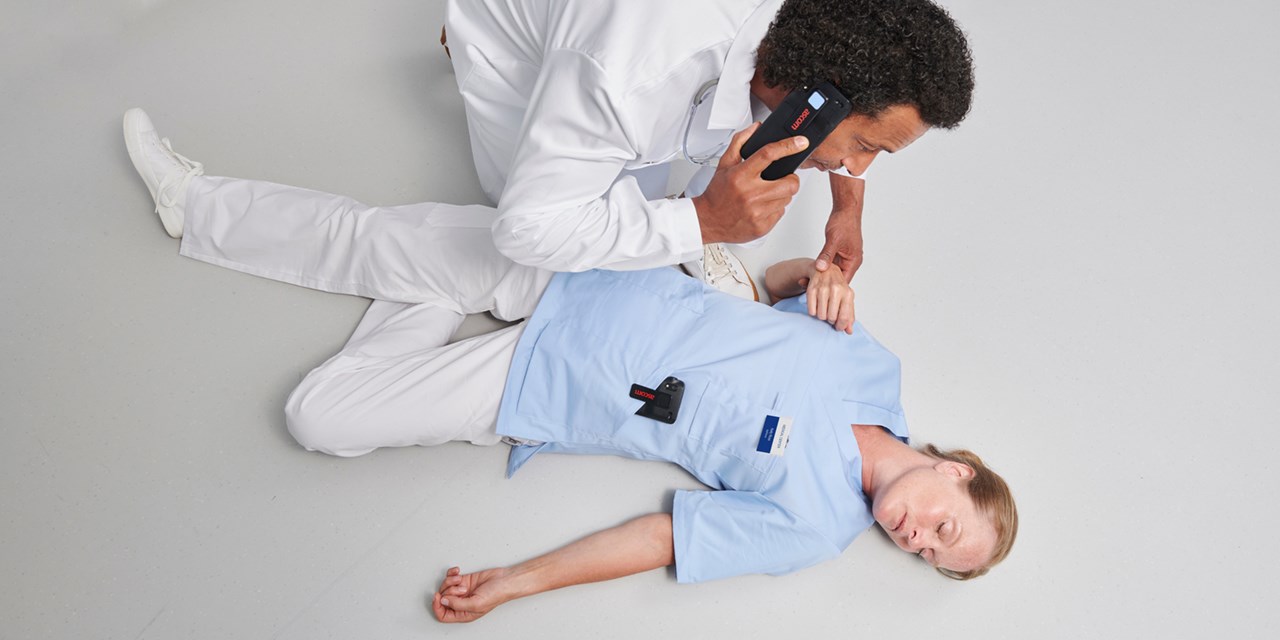Country selector

Corporate
Country Selector: Corporate

Lone healthcare workers face greater risks if something goes wrong, especially in areas of hospitals with fewer staff that may not be as frequently monitored.
Through its reliable, automatic alarms and responses, the Ascom Healthcare Platform staff safety feature helps staff feel safer at work and minimizes the consequences and costs for healthcare organizations.

In modern healthcare, staff are increasingly working on their own or remotely. This is as care models shift towards keeping people at home, but also in hospitals, particularly during off-hours, where staff can find themselves working alone within isolated departments.
In such situations, staff who are injured or otherwise in danger may be unable to communicate or call for help. As a result, there is a real need to maximize their safety at work to reduce injuries, illness and deaths as well as making staff feel less isolated and more secure. For healthcare providers who need to attract and keep staff and reduce turnover, this also means helping organizations avoid the consequences and costs of an incident, not to mention avoid any illegal breaches of their health and safety responsibilities.
Lone working is increasing as care models shift towards keeping people at home
When lone or remote healthcare workers are in danger, they can raise an alarm to quickly notify responders to come to their location. Also, if they are incapacitated, the alarm is raised automatically through man-down/no-movement sensors or through setting a timer countdown. Staff are reassured that their safety is taken seriously and that help is never far away – even if the worst happens.
The Lone worker safety feature within the Ascom Healthcare Platform is based on mobile devices with built-in staff safety features such as automatic man-down, no-movement and countdown alarms, panic buttons, real-time location technologies, alarm dashboards, incident mapping and mobile response workflows.
Lab technician working alone falls
Walter Brennan. Safer lone working: assessing the risk to health professionals 2010 Br J Nurs. 2010;19(22):1428-30. doi: 10.12968/bjon.2010.19.22.1428